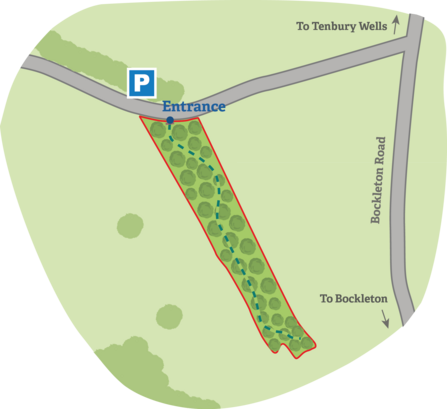Upper Swingley Wood
Location
Know before you go
Dogs
When to visit
Opening times
Dawn to duskBest time to visit
Spring and summer.About the reserve
The reserve consists of a long, narrow strip of coppice woodland. A small stream rises near the south end of the site and runs down the centre of the wood, bounded on both sides by marshy ground.
Originally, the reserve would have been dominated by Alder and Willow, but in 1811 the Bockleton estate planted the area up as an "Ash bed", probably to supply poles for the nearby hop-yards. As a result of this planting, although Alder and Willow still grow in the marshy parts, in the drier areas there are now massive old coppiced Ash stools, covered in mosses and lichens, and forming a particular feature of the reserve. The ancient nature of this wood is confirmed by the distinctive ground flora with large amounts of bluebell, primroses and moschatel.
There are smaller quantities of yellow archangel, meadow saffron, woodruff, red campion, twayblade and early purple orchids. In the marshy areas, meadowsweet and water avens abound, with marsh marigolds beside the stream.
Habitat
Contact us
Coppicing at Upper Swingley Nature Reserve, 2019
Lewis Goldwater and a team of fantastic volunteers undertake coppicing at this reserve.
Many thanks to Severn Waste who funded this work through the Landfill Communities Fund.

Upper Swingley Wood site map





